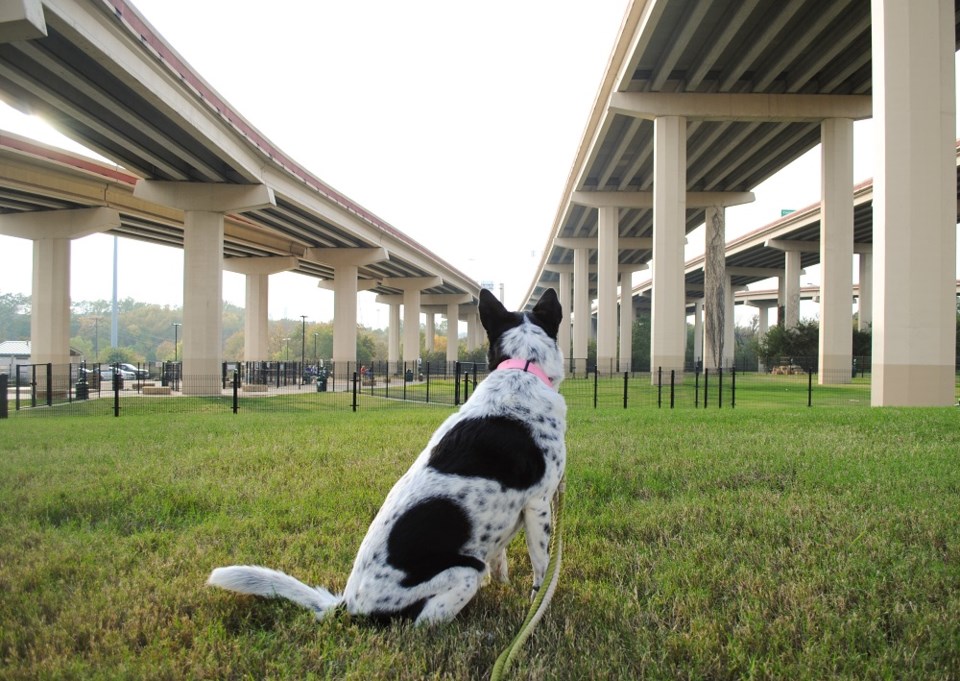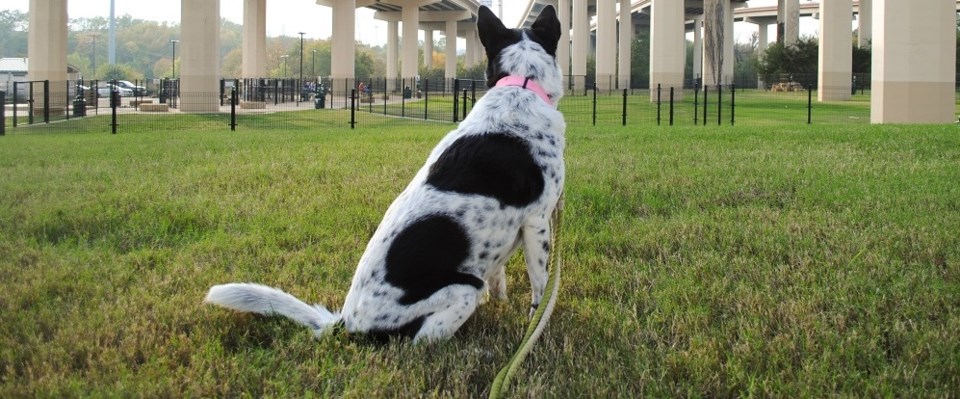
The Brooks house is full of life. Squeaky toys and bones pepper the downstairs (two cats have made the upstairs study their domain). Usually, one of their temporary house guests is stirring, romping around for food, barking to ward off mailmen, chasing squirrels into the trees. On one particular winter morning, Lisa and Scott Brooks were getting their coffee when they thought to check in on a Maltese mix that Lisa had picked up the day before. The dog had been in a North Texas shelter for so long that she was on what Lisa calls “death row.” Lisa and her husband at Pooch Savers Rescue had tagged her—let the shelter know they were coming for her—picked her up, and made a place for her in their foster dog program.
On her first night in the Brooks house, Lisa says the Maltese had sniffed around, found a comfortable spot, and curled up peacefully. However, when they checked on her the next morning, she wasn’t alone. There was a newborn puppy lying next to her.
“A puppy!” Lisa recalls laughing. She had suspected the dog might be pregnant when she picked her up, but the shelter hadn’t said a word about it. They had picked up one dog. By day’s end, they had five.
When Lisa and Scott Brooks first decided to volunteer at a shelter ten years ago, she couldn’t foresee how their lives would change, or that they would eventually open their own nonprofit, all breed rescue operation, Pooch Savers Rescue.
Pooch Savers Rescue isn’t a shelter, Lisa explains. It’s a nonprofit that utilizes foster homes for their dogs, typically averaging 20 dogs at a time. Every day, they check shelter euthanasia lists, and news of strays and owner surrenders, looking for the few that they can save. They foster dogs themselves and place dogs in foster homes as well, covering all the necessities: food, toys, health care, leases, dog beds, dog bowls. “We’re strong advocates for foster homes,” Lisa explains. Fostering is like babysitting. It’s temporarily providing a safe and loving environment until that pet gets adopted. “It’s a huge relief for the shelter and rescue groups. We cannot save animals from euthanasia if there’s nowhere to put them.”
Ten years ago, Lisa and Scott, who have no children of their own, decided to spend their free time volunteering with SPCA Second Chance, walking dogs, cleaning pens. Scott is a handyman, so he would also fix things around the shelter.
“We had no idea about the rescue world at all, about the need for foster homes, the high euthanisasia rate, amount of strays and owner surrenders local shelters see. We just thought, ‘How fun! We get to play with dogs!’”
After a couple of weeks volunteering, SPCA Second Chance asked them to foster two puppies. Don’t worry, the shelter said, two is easier than one. They’d never owned dogs together, so the process was completely new. The only hard part was when the first puppy was adopted.
“It’s still hard to this day,” she admits. “I cried and cried for days leading up to it. I was so sad. You foster a dog, you fall in love with these animals, you care for them as if they’re your own. You take a dog off the street, or who’s been neglected, and your heart just bleeds for them. A dog you’ve had and loved and now you have to give it away. I learned if you focus on the next one you can save, that sadness goes away.”
Pooch Savers Rescue snowballed from there. “Once you see how much needs to be done in rescue, it’s so hard to turn your back,” Lisa says. Two turned into three, four, and now she isn’t sure she can even say how many dogs they have fostered. “If you say no and there is not another foster home, that animal’s fate is not good. Most people don’t realize that; nine times out of ten, when we tell people about our mission, people are shocked that these dogs were about to be euthanized.” At this point, she estimates that they have fostered upwards of 400 dogs.
“Our local shelters are overrun,” Lisa says. “That’s sadly, not new. Texas is a top state in country for euthanasia, pet overpopulation, strays, owner surrenders …” Simply put, there is a surplus of dogs who need homes and shelters and rescues, like Pooch Savers Rescue, are limited on space. “People get puppies, and think they can handle it, and it turns out they can’t. Maybe the dog barks or isn’t potty trained—boom. They’re taken to the shelter.”
According to data the SPCA collected from shelters across the country from 2015-2018—a difficult feat, considering that shelters are not uniformly required to keep statistics—approximately 6.5 million animals enter U.S. animal shelters nationwide annually. They also report that approximately 1.5 million shelter animals are euthanized every year, a decline from 2.6 million in 2011.
Animals might be euthanized for illness, if an illness is too expensive to treat, could infect others, or a particularly small chance of recovery. Sometimes dogs must be put down because of aggression. However, the most common reason that animals are euthanized is also the most preventable: simple overpopulation. When there are more pets who need homes than there are eligible adopters, shelters are left with sadly few options.
The Brooks have to be prepared for dogs to arrive in any kind of condition. They might have mange, their skin raw and red, or heartworm. Sometimes they find purebreds, like a beautiful Havanese they took in whose fur was so matted that they had to shave him completely. They put all the fur, matted with sticks, leaves, and dirt, in a Tom Thumb bag, and it weighed four pounds.
One year, Pooch Savers took in a little Yorkie that had been used for breeding, and was kept in a filthy crate for a long time, most of its life. “We got him, brought him to our house and put him down on the floor, he walked in circles. He had never been outside of a crate, and it’s usually the smallest crate possible. Even after several weeks, he still circled. His circles got bigger, but he still circled.” It was the typical of a former breeding dog.
Lisa and Scott founded Pooch Savers Rescue in order to make a bigger impact, to help more dogs than simply the ones they could fit in their home.
“If you do foster, you get to save them. You know the person adopting that dog has been vetted, and they’re going to the best possible home.” Often the people who adopt a Pooch Rescue dog become like family, sending Christmas cards, pictures, and email updates.
The hardest part is that there are still more dogs than they, and other operations like them, can take. As we speak, Lisa got a private message about a dog that is in danger of being put down at a Fort Worth shelter that is desperately over capacity. He is an 18-pound Shih Tzu who Lisa assures me will be snapped up in an instant.
“These dogs know when they have been rescued,” she says. “They know. Some who have been rescued, stayed in our home, and then get adopted, if we see them again, those dogs remember us years later.”
Pooch Savers holds adoption events at PetSmart, 6204 W. Park Blvd., Saturdays and Sundays from 1 – 5 p.m. | poochsavers.com




